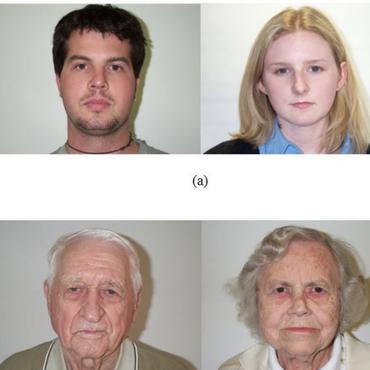Search Results for author: Sebastian Raschka
Found 17 papers, 9 papers with code
Deep Neural Networks for Rank-Consistent Ordinal Regression Based On Conditional Probabilities
4 code implementations • 17 Nov 2021 • Xintong Shi, Wenzhi Cao, Sebastian Raschka
However, while earlier experiments showed that CORAL's rank consistency is beneficial for performance, it is limited by a weight-sharing constraint in a neural network's fully connected output layer, which may restrict the expressiveness and capacity of a network trained using CORAL.
Deeper Learning By Doing: Integrating Hands-On Research Projects Into a Machine Learning Course
1 code implementation • 28 Jul 2021 • Sebastian Raschka
Machine learning has seen a vast increase of interest in recent years, along with an abundance of learning resources.
Ten Quick Tips for Deep Learning in Biology
1 code implementation • 29 May 2021 • Benjamin D. Lee, Anthony Gitter, Casey S. Greene, Sebastian Raschka, Finlay Maguire, Alexander J. Titus, Michael D. Kessler, Alexandra J. Lee, Marc G. Chevrette, Paul Allen Stewart, Thiago Britto-Borges, Evan M. Cofer, Kun-Hsing Yu, Juan Jose Carmona, Elana J. Fertig, Alexandr A. Kalinin, Beth Signal, Benjamin J. Lengerich, Timothy J. Triche Jr, Simina M. Boca
In particular, machine learning is concerned with the development and applications of algorithms that can recognize patterns in data and use them for predictive modeling.
When Few-Shot Learning Meets Video Object Detection
no code implementations • 26 Mar 2021 • Zhongjie Yu, Gaoang Wang, Lin Chen, Sebastian Raschka, Jiebo Luo
We employ a transfer-learning framework to effectively train the video object detector on a large number of base-class objects and a few video clips of novel-class objects.
Visual Framing of Science Conspiracy Videos: Integrating Machine Learning with Communication Theories to Study the Use of Color and Brightness
no code implementations • 1 Feb 2021 • Kaiping Chen, Sang Jung Kim, Qiantong Gao, Sebastian Raschka
Recent years have witnessed an explosion of science conspiracy videos on the Internet, challenging science epistemology and public understanding of science.
Looking back to lower-level information in few-shot learning
no code implementations • 27 May 2020 • Zhongjie Yu, Sebastian Raschka
In this work, we propose the utilization of lower-level, supporting information, namely the feature embeddings of the hidden neural network layers, to improve classifier accuracy.
Machine Learning in Python: Main developments and technology trends in data science, machine learning, and artificial intelligence
2 code implementations • 12 Feb 2020 • Sebastian Raschka, Joshua Patterson, Corey Nolet
Smarter applications are making better use of the insights gleaned from data, having an impact on every industry and research discipline.
Machine learning and AI-based approaches for bioactive ligand discovery and GPCR-ligand recognition
no code implementations • 17 Jan 2020 • Sebastian Raschka, Benjamin Kaufman
However, an equal focus of this review is on the discussion of machine learning-based technology that has been applied to ligand discovery in general and has the potential to pave the way for successful GPCR bioactive ligand discovery in the future.
PrivacyNet: Semi-Adversarial Networks for Multi-attribute Face Privacy
no code implementations • 2 Jan 2020 • Vahid Mirjalili, Sebastian Raschka, Arun Ross
Further, PrivacyNet allows a person to choose specific attributes that have to be obfuscated in the input face images (e. g., age and race), while allowing for other types of attributes to be extracted (e. g., gender).
FlowSAN: Privacy-enhancing Semi-Adversarial Networks to Confound Arbitrary Face-based Gender Classifiers
no code implementations • 3 May 2019 • Vahid Mirjalili, Sebastian Raschka, Arun Ross
In this regard, Semi-Adversarial Networks (SAN) have recently emerged as a method for imparting soft-biometric privacy to face images.
Rank consistent ordinal regression for neural networks with application to age estimation
4 code implementations • 20 Jan 2019 • Wenzhi Cao, Vahid Mirjalili, Sebastian Raschka
In many real-world prediction tasks, class labels include information about the relative ordering between labels, which is not captured by commonly-used loss functions such as multi-category cross-entropy.
 Ranked #1 on
Age Estimation
on AFAD
Ranked #1 on
Age Estimation
on AFAD
Model Evaluation, Model Selection, and Algorithm Selection in Machine Learning
4 code implementations • 13 Nov 2018 • Sebastian Raschka
The correct use of model evaluation, model selection, and algorithm selection techniques is vital in academic machine learning research as well as in many industrial settings.
Gender Privacy: An Ensemble of Semi Adversarial Networks for Confounding Arbitrary Gender Classifiers
no code implementations • 31 Jul 2018 • Vahid Mirjalili, Sebastian Raschka, Arun Ross
Recent research has proposed the use of Semi Adversarial Networks (SAN) for imparting privacy to face images.
Semi-Adversarial Networks: Convolutional Autoencoders for Imparting Privacy to Face Images
1 code implementation • 1 Dec 2017 • Vahid Mirjalili, Sebastian Raschka, Anoop Namboodiri, Arun Ross
In this paper, we design and evaluate a convolutional autoencoder that perturbs an input face image to impart privacy to a subject.
MusicMood: Predicting the mood of music from song lyrics using machine learning
1 code implementation • 1 Nov 2016 • Sebastian Raschka
Sentiment prediction of contemporary music can have a wide-range of applications in modern society, for instance, selecting music for public institutions such as hospitals or restaurants to potentially improve the emotional well-being of personnel, patients, and customers, respectively.
An Overview of General Performance Metrics of Binary Classifier Systems
no code implementations • 17 Oct 2014 • Sebastian Raschka
This document provides a brief overview of different metrics and terminology that is used to measure the performance of binary classification systems.
Naive Bayes and Text Classification I - Introduction and Theory
2 code implementations • 16 Oct 2014 • Sebastian Raschka
Naive Bayes classifiers, a family of classifiers that are based on the popular Bayes' probability theorem, are known for creating simple yet well performing models, especially in the fields of document classification and disease prediction.





